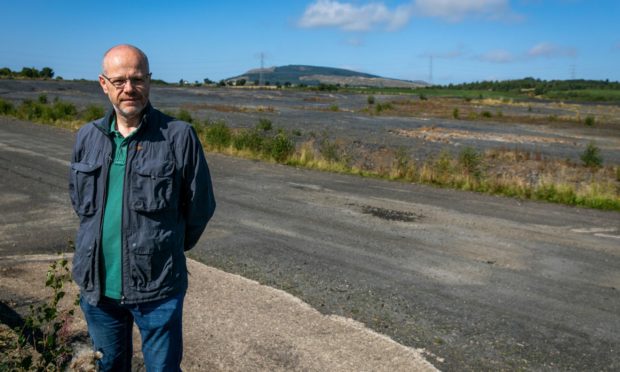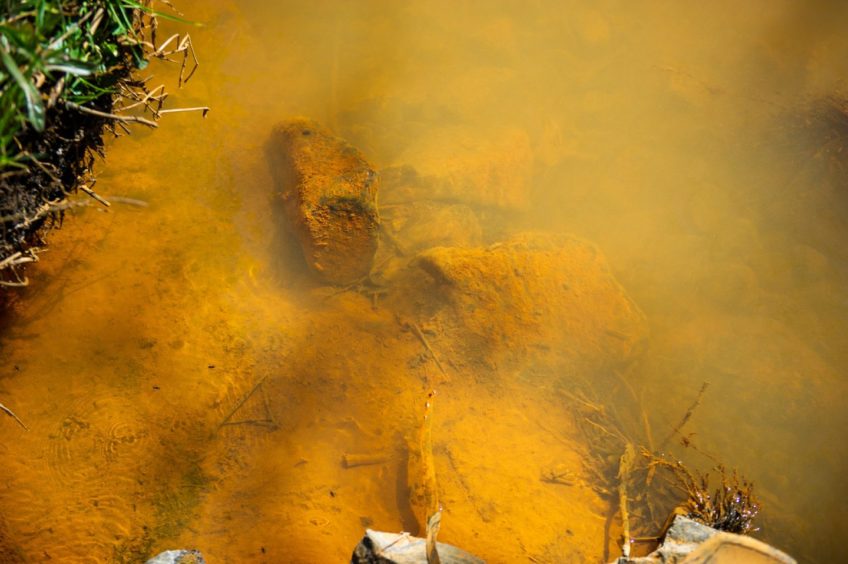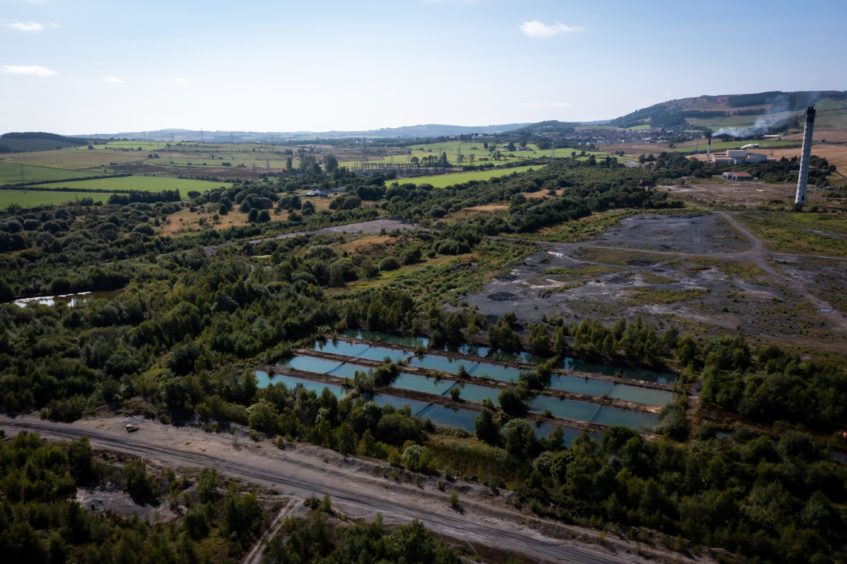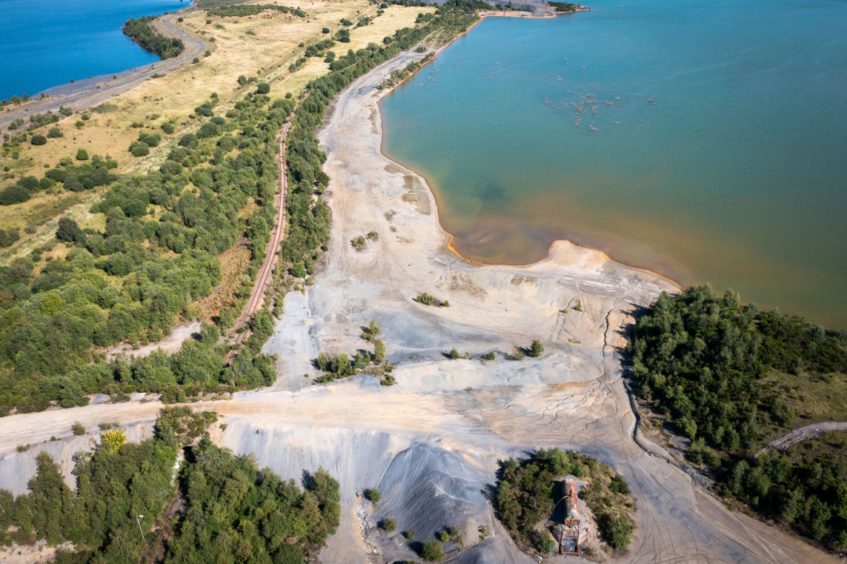An orange tinged Fife burn could run clear if the regeneration of the Westfield opencast site goes to plan.
Running through what was once one of Europe’s largest opencast coal pits, the Lochty Burn is contaminated with iron deposits.
The iron has turned the water bright orange.
At times the burn has resembled Irn Bru.
Anglers have claimed the ferrous pollution is killing salmon in the River Leven.
The Lochty runs into the River Ore at Thornton, which in turn leads into the Leven.
Are reed beds the solution to the Irn Bru burn?
Landowners Hargreaves are now working on a scheme to improve the water quality.
They are planning to install reed beds at the site, which covers more than 1,000 acres west of Kinglassie.
Hargreaves regional director Philip Rayson says the reed beds will filter the water, removing the iron.
“When it goes out the site, it will be going out cleaner than when it comes in,” he said.
“That’s all fitting into the bigger scheme that Sepa are looking at in relation to the River Leven.
“There’s not much point in sorting out something downstream if you don’t have things in place upstream. The improvements to the Leven need to be looked at holistically.”
Could Westfield opencast site help prevent flooding?
Hargreaves are also looking at options to alleviate flooding in the area.
After the storms of August last year, the Lochty Burn burst its banks.
The impact on Kinglassie residents was devastating. Some residents had to be rescued by boat as homes were deluged.
“We’re not part of the problem but we want to be part of the solution,” said Mr Rayson.
He said there were plans for something similar to a SuDS (sustainable drainage system) pond.
This would help prevent floodwaters from flowing into, and overwhelming, the Lochty Burn.
“We’re working with Fife Council and Sepa to see if we can do something on our land to create additional storage for floodwaters to provide a temporary solution to the flooding issue in Kinglassie whilst a long term sustainable solution is developed.
“If we can hold some water on site in what would effectively be a SuDS pond that would hold back the peak flow during flood conditions.”
Westfield aims to be ready for business by next autumn
The next phase of the regeneration project will involve adding utilities and improving access roads.
Mr Rayson said infrastructure would be in place to welcome businesses to the site by October next year.
Work will start in spring.
The site is being marketed to companies including those involved in recycling and food production.
It will be served by an energy from waste incinerator, for which Brockwell Energy has planning permission at the site.
A 30 megawatt solar farm is also in the pipeline.
However, the incinerator proposal has proved controversial. Four neighbouring community councils objected to the plant.
Green MSP Mark Ruskell has also spoken out, stating non-recyclable waste should be reduced, not burned.
But Hargreaves maintain they have been working with local communities to develop plans for the area.
Mr Rayson said the regeneration of Westfield would include improving footpaths.
The remains of the opencast smother what was once part of the Pilgrim’s Way and there is potential to restore the route.
Site is legacy of more than a century of coal mining
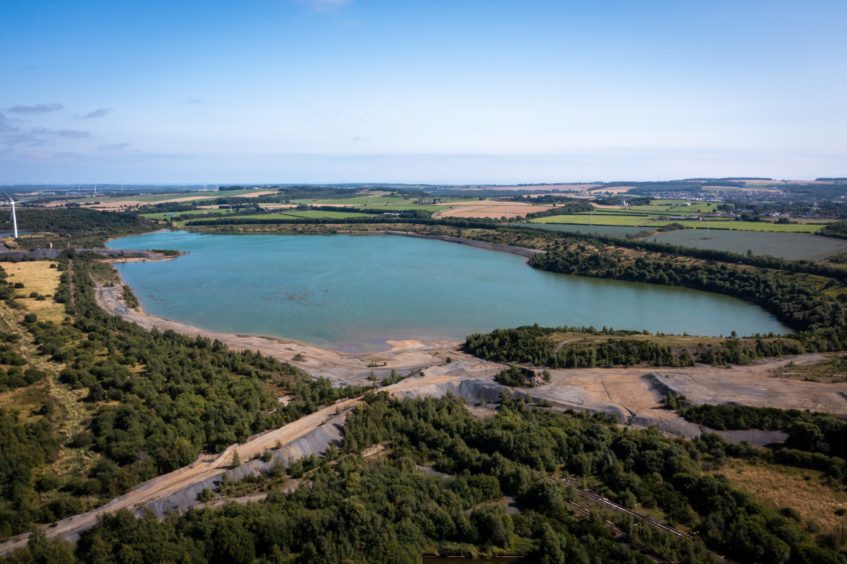
Westfield operated as an opencast mine from 1961 to 1996.
So much material was taken out of the ground, it was enough to build a man made hill to the south of the site.
Coal mining activities at the site date back 150 years. There were deep coal mines there as early as the 1870s.
A map of the area from 1896 shows a railway line serving the site, the remnants of which still remain.
Mr Rayson said there had been talks with Network Rail about bringing the railway back into use.
He added: “This is a site that has a long history of energy production in Fife. By accommodating new industries it will continue to provide jobs for the people of Fife.”
